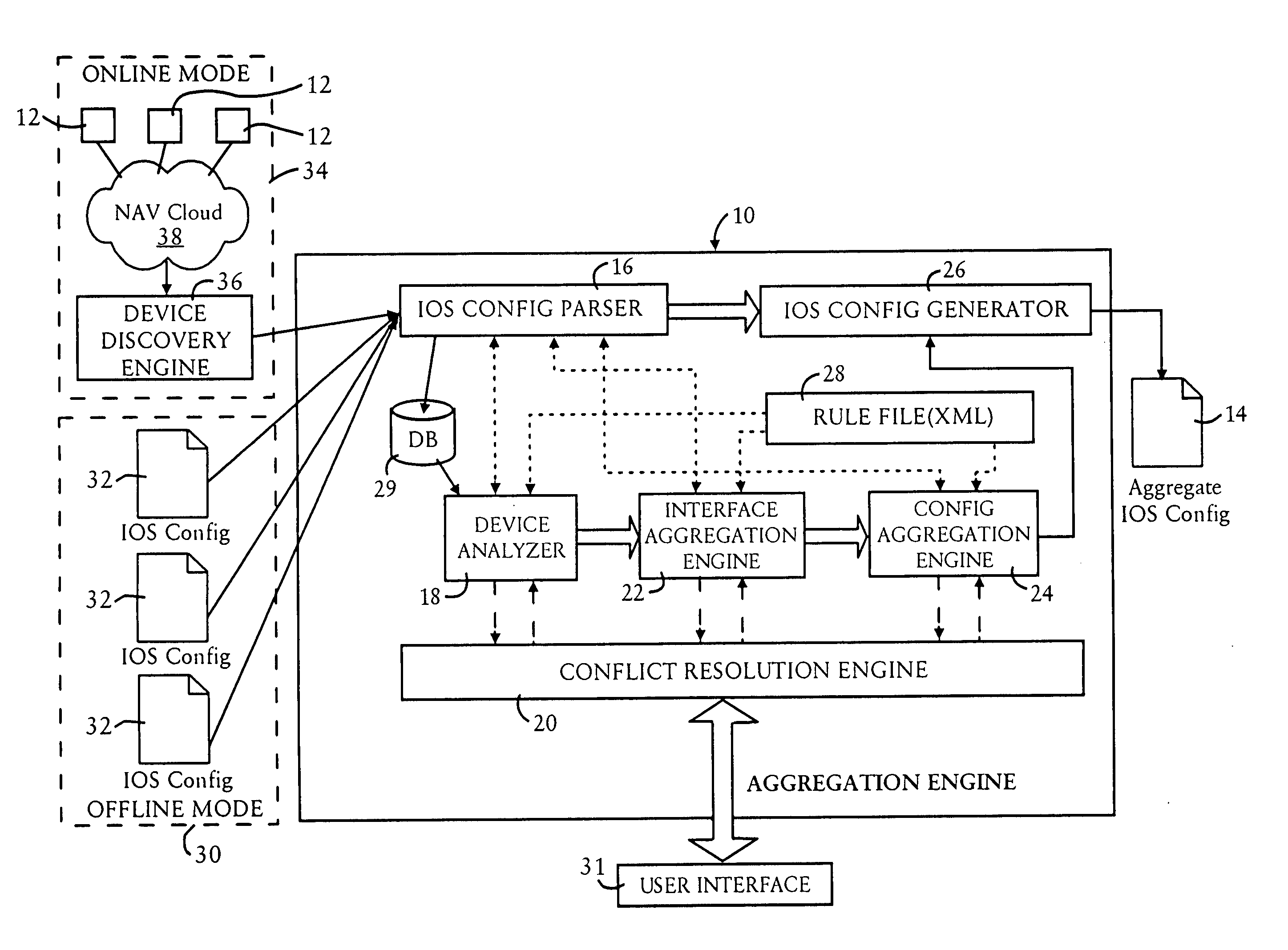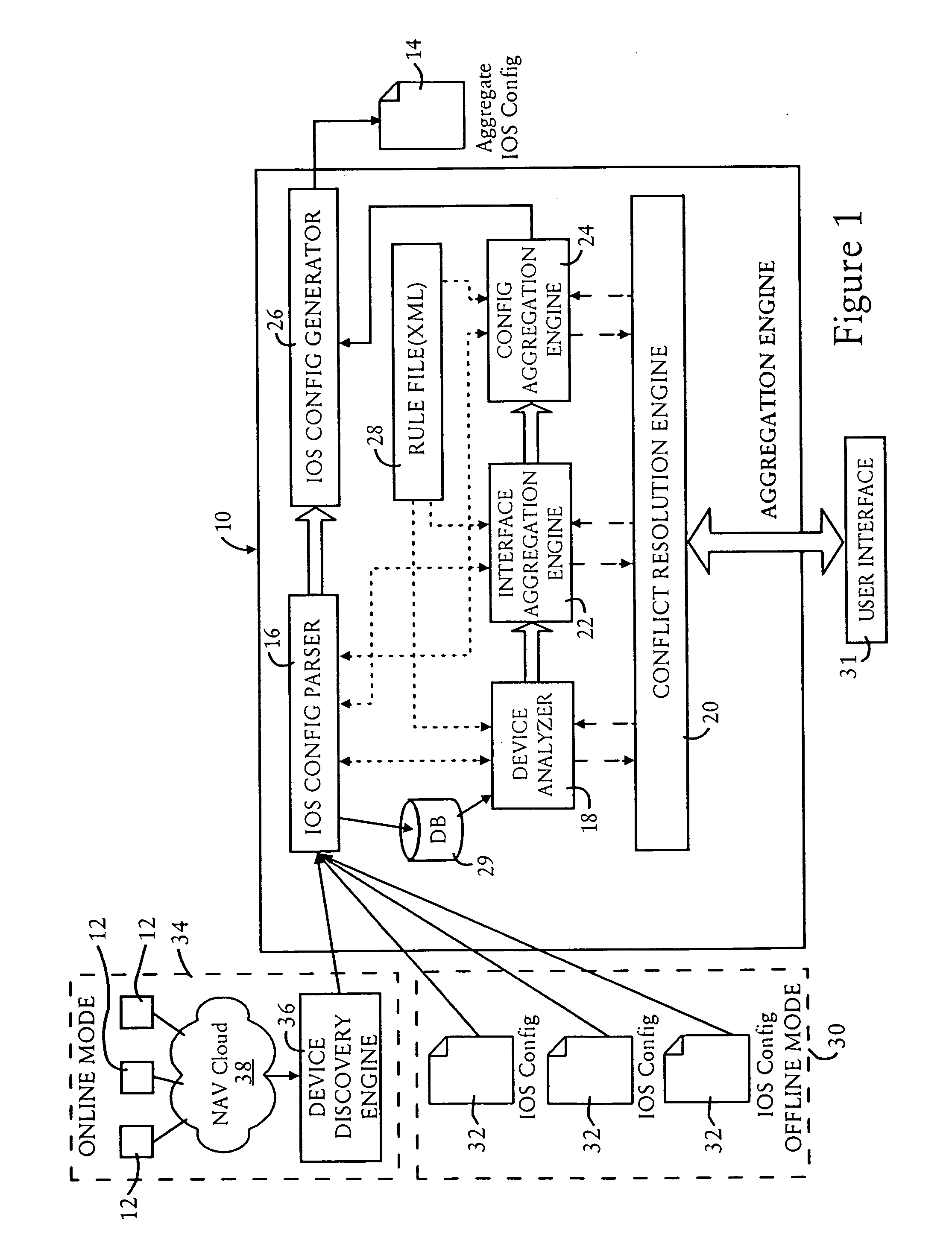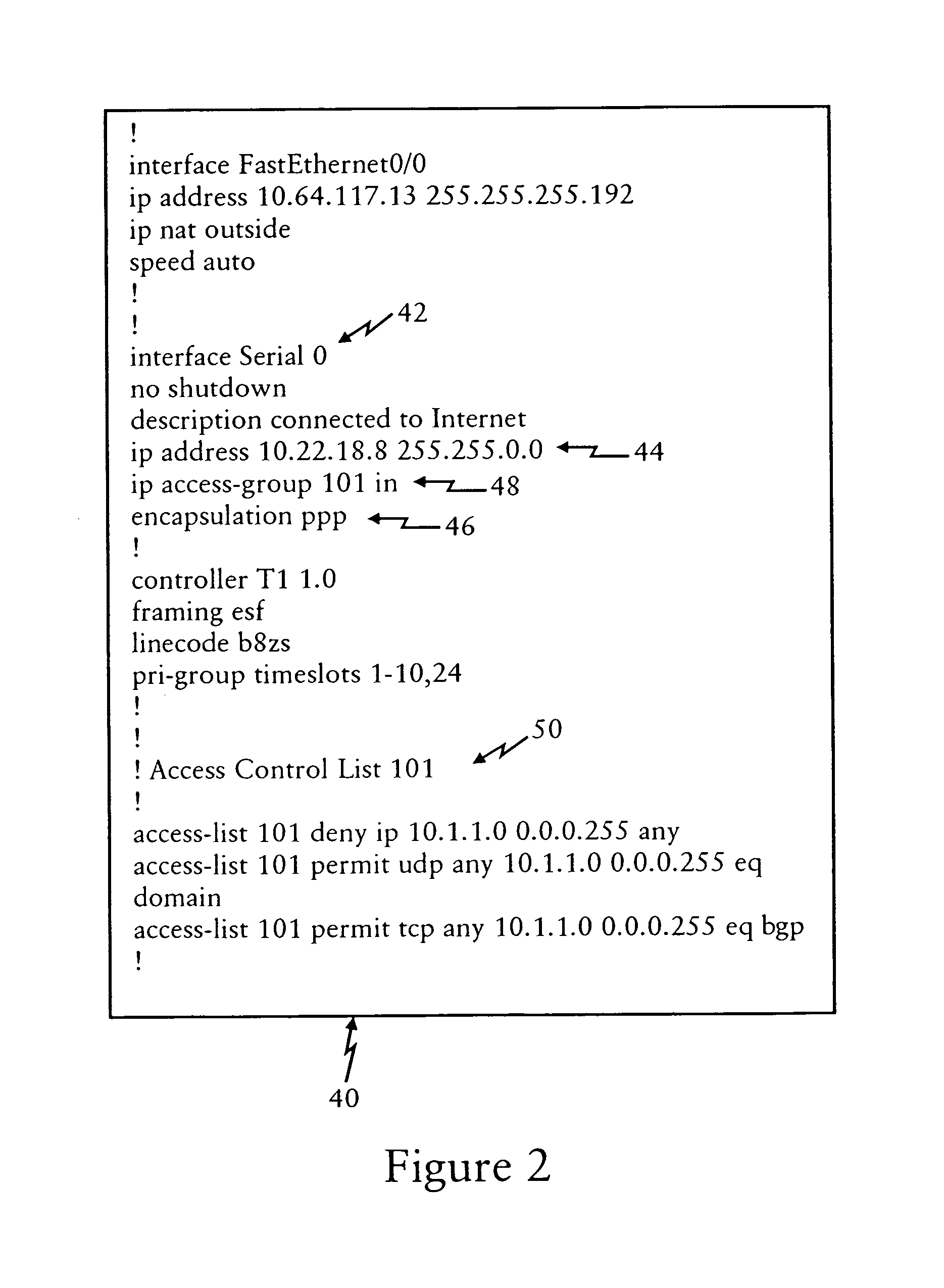Arrangement for aggregating multiple router configurations into a single router configuration
- Summary
- Abstract
- Description
- Claims
- Application Information
AI Technical Summary
Benefits of technology
Problems solved by technology
Method used
Image
Examples
Embodiment Construction
[0020]FIG. 1 is a diagram illustrating a migration system 10, also referred to as an aggregation engine, configured for aggregating multiple router configurations for multiple routers 12, into a single router configuration 14 that can be used by a single aggregate router, according to an embodiment of the present invention. The migration system 10 is configured as a processor-based executable system configured for executing executable code that may be stored on a computer-readable medium; hence, the components illustrated in FIG. 1 represent the operational components that are implemented upon execution of the executable code.
[0021]The migration system 10 includes a configuration parser 16, a device analyzer 18, a conflict resolution resource (i.e., “engine”) 20, an interface aggregation engine 22, a configuration aggregation engine 24, a configuration generator 26, and a rule file 28. Note that the interface aggregation engine 22, the configuration aggregation engine 24, and the co...
PUM
 Login to View More
Login to View More Abstract
Description
Claims
Application Information
 Login to View More
Login to View More - R&D
- Intellectual Property
- Life Sciences
- Materials
- Tech Scout
- Unparalleled Data Quality
- Higher Quality Content
- 60% Fewer Hallucinations
Browse by: Latest US Patents, China's latest patents, Technical Efficacy Thesaurus, Application Domain, Technology Topic, Popular Technical Reports.
© 2025 PatSnap. All rights reserved.Legal|Privacy policy|Modern Slavery Act Transparency Statement|Sitemap|About US| Contact US: help@patsnap.com



